SaaS SEO Guide
Strategic SaaS Link Building – Strategies for SaaS backlinks
Book a FREE SEO Strategy Consultation >
Further Reading:
You probably have a lot of goals in life.
Do you want to climb Everest? Visit all seven continents? Master the perfect sourdough recipe?
For many SaaS businesses, especially startups, cracking the first page of search engine results isn’t just a goal but a priority. It’s how you raise brand awareness and drive growth. Finding your way into the top ten results of a Google search sets you apart from your competitors and gives you credibility in your industry.
But that first page can be elusive. So how can you get your business there? A solid SEO (search engine optimization) strategy is the answer. And the backbone of that SEO strategy? Backlinks.
Investing in a well-crafted marketing plan can do wonders for your website’s visibility and credibility. As accelerate agency points out in their guide to SaaS marketing budgets, creating quality content and building strong backlinks can help establish your brand as an authority in your industry.
By setting aside a portion of your marketing budget for content marketing and link building, you can improve your website’s ranking in search results, attract more visitors to your site, and ultimately increase your conversion rates. It’s a proven strategy that can pay off in a big way for SaaS companies, especially startups looking to make a name for themselves in a crowded market.
Shameless plug and SEO optimization – we can get you backlinks from the most powerful sites in the world for example Hubspot, TechCrunch, BigCommerce. Check out our link building and outreach page (don’t forget internal links).
01. What are backlinks?
Backlinks are simply links from one website to another.
For example, let’s say you’re reading an article on website A, and website A’s article links to website B. The link to website B is the backlink. It’s kind of like a referral from website A saying, “Go check out website B; they have some good stuff.”
Search engines see these referrals (backlinks) between pages and rank pages higher in search results if they have more backlinks, i.e., quantity, and if the backlinks are good, i.e., quality. We’ll get into the different strategies you can employ to improve your backlinks later in the article, but for now, it’s important to grasp the idea of backlinks.
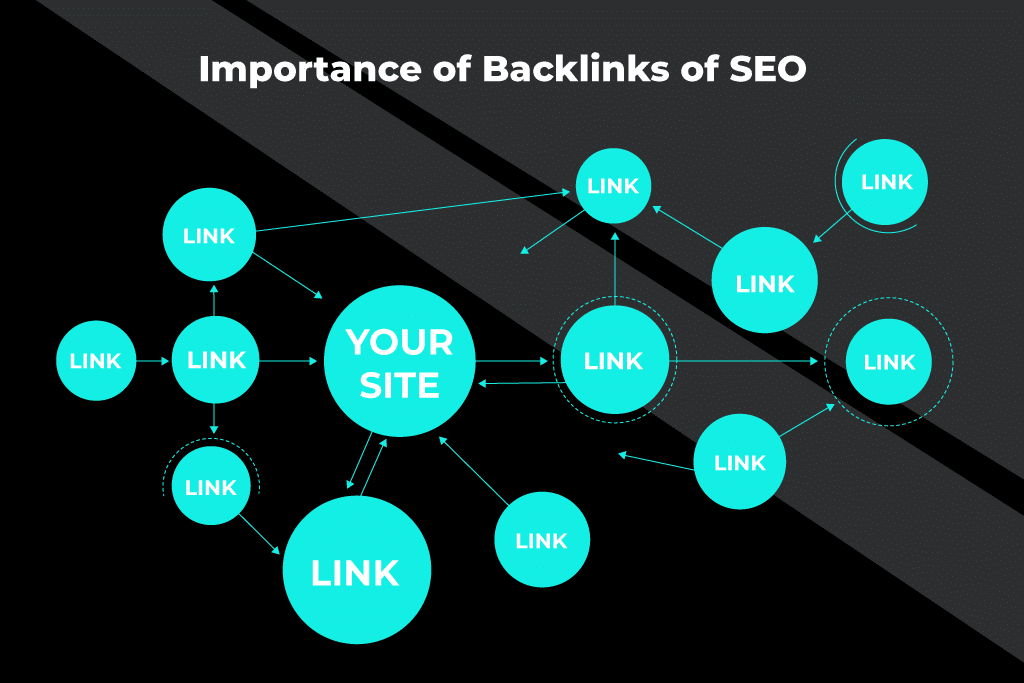
Backlinks will sometimes go by other names, like:
- Incoming link
- Inbound link
- Inlink
- Inward link
But they’re referred to as backlinks most often, so that’s what we’ll stick with.
Book a FREE SEO and Link Building Consultation
How do backlinks work?
Backlinks act as value indicators for search engine algorithms when determining where your website ranks for specific topics and keywords.
For example, when you apply for a job, you give the company you’re applying to a list of references that confirm you’re a good hire. In turn, you may act as a reference for one of your references. Backlinks operate as references between websites, proving they’re worth visiting.
How your website ranks on search engine results pages (SERPs) is crucial for business growth and driving visitors to your site. If a large number of sites link back to a specific website, it will be seen as the leading authority on its topic and will therefore rank higher in search engine results.
02. How can SaaS brands benefit from backlinks?
From January to December 2020, nearly 65% of Google searches ended without a click to another website, in other words, a zero-click search.
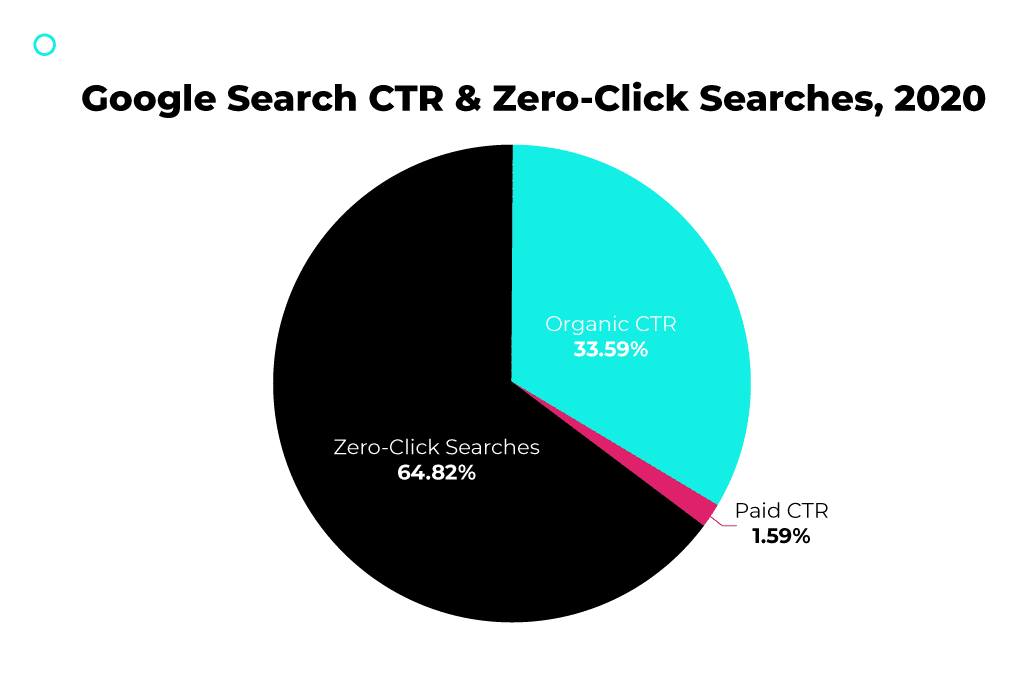
When faced with these kinds of numbers, you want to make sure your SaaS brand is doing everything possible to improve your search engine ranking. More eyeballs mean more brand awareness. Backlinks are one of the key ways to get your website higher in search engine results, but you can’t just throw some links up on your page and call it a day.
Increasing backlinks on your website and to your website calls for serious work and a dedicated strategy. Backlinks should be just one of the crucial elements of your SEO strategy, along with quality SEO content and technical SEO.
Organic traffic
The traffic your website generates from a search engine without any paid advertisements is organic traffic. Instead, people just naturally, or organically, find your website while using a search engine.
The opposite of organic traffic is paid traffic, and it is what it sounds like. Paid traffic is traffic to your website that has been generated through paid advertisements on search engines. You’ll recognize these on any Google search page as the first three results with the word “Ad” in the top left corner.
Here’s an example of paid advertisements on a Google search:

Everyone with a web page is looking to increase their organic traffic, especially in a growing market like SaaS. Backlinks are a valuable way to increase organic traffic to your website.
Higher ranking on search engines
Backlinks will boost your ranking in a search engine, and so more people will be aware of your brand. Therefore, a decent amount of high-quality backlinks in well-thought-out content will help your SaaS brand stand out from your competitors.
And high-quality content is the key here. There’s a strategy to building links—you can’t just throw them in wherever you want. Anchor text, link position, and external links vs. internal links all need to be considered.
For example, let’s say you post an article on your site’s blog. Links in that blog that appear in the first third of the text will affect your search engine ranking more than a link in the bottom third of the text—just something to keep in mind.
03. What are SEO backlinks examples?
SEO backlinks come in all shapes and sizes. While you’ll most often see backlinks as hyperlinked text with descriptive anchor text, they can also show up in the following ways:
- A URL on a website, social media post, or podcast episode description
- An image or badge on a homepage
- Video with an embedded link
- Infographic with an embedded link
Here’s an example of links in a podcast’s episode’s notes:

Notice all the links?
Backlinks also come in different values.
A backlink from a high authority website, like The New York Times, is going to give your site a lot more reward for your effort, than for example, a small local newspaper. This idea is known as domain authority, and it means the more trustworthy and influential a site, the more clout you get for backlinking.
And don’t forget to do your keyword research.
Make sure that your target keywords are used as your backlink’s anchor text. In case you need a reminder or you’re new to the world of SEO, a keyword is a word or phrase that potential traffic/customers input into a search engine to find the services they’re looking for.
Try to keep your anchor text natural and relevant to the source material you’re linking back to. Google will penalize sites that use backlinks with ‘exact match’ anchor text. If you’re unsure what else Google might penalize, we’ll be covering how not to build backlinks later in this article.
Another type of backlink to be aware of is the “nofollow” backlink. Nofollow links don’t count in search engine algorithms because they’re usually from sources that don’t add relevance to search queries.
A lot of nofollow links are comments posted under a blog or video, press releases, or paid advertisements. Again, most links are “dofollow,” so you won’t have to worry about this, but it’s good to know about and keep in mind.
And lastly, backlinks from one source are great, but if that source links to your site multiple times? You’re going to lose some ranking power. Remember, the total amount of sites and their domain authority are essential, not the number of times they link to your site.
04. Are backlinks still important in 2023?
Probably more than ever.
Google AI is working on a new search algorithm based on their 2018 BERT model, called the Multitask Unified Model, or MUM for short. MUM is being developed to scan the open web, disregarding low-quality content in its data crawl.
While MUM won’t be fully operational just yet, it’s worth considering the effect it might have on higher SEO rankings.
Meanings and context will matter more than ever in the future of building links. Low-quality links will be ignored, and contextual links that add value to a site will be rewarded.

Algorithms of the future, like MUM, will have a more nuanced understanding of language, including multiple languages. As a result, strategic link building will be critical for SaaS marketing strategies looking to navigate the world of advanced search engine algorithms.
05. What makes content linkable?
Linkable content must be engaging and shareable. Fulfill the following criteria and watch your content spread like wildfire.
1. Useful and actionable
Linkable content will be useful and actionable. It should be specific to your SaaS niche and provide information or insight that other people in your industry and users in your target audience will want to share.
Did you develop a hack to onboard remote team members in record time? Then, write a blog post detailing the process and share it. Getting your ideas out there will increase awareness of your SaaS brand, and you never know who might be reading.
Take, for example, this blog post from Hubspot: “The 20 Best Marketing Articles of All Time, According to HubSpot’s Marketing Team.”

This kind of article really doubles down on valuable and informative linkable content. First, it’s a roundup (more on that later) of recommendations from their marketing team. Second, the recommendations are articles, which link to even more information—a true nesting doll of articles.
2. One of a kind
Like any good internet content, strive to make your brand content memorable (and ideally sharable.) One-of-a-kind content could be an in-depth article, a fun infographic, ranking articles, templates, calculators…the list goes on and on. Get creative with your content, and it will instantly be more linkable.
Take the infographic. Canva posted this piece of content: “40 of the best infographics to inspire you,” featuring all kinds of exciting infographics. A smart content marketing move by Canva, as graphic design is one of the elements of their product.

Readers can peruse the infographics with the awareness that they could make something similar on Canva.
How to come up with linkable topics
Coming up with linkable topics might seem like a challenge, but it’s not as hard as you think.
Linkable topics are often just riffs on popular topics relevant to yours or an adjacent industry. Like Hubspot tackling marketing, or Canvas focusing on graphic design, your industry will guide you in content creation.
Think about what your SaaS business is offering. Have you recently solved a problem? Found a new useful product that helps you conduct business? Sometimes the answer is right in front of you.
When you have some ideas, run them through a content explorer to see if they’re popular. Ahrefs Content Explorer is a popular choice, and the Semrush Topic Research tool is another option. These online marketing tools will show you various metrics to break down and apply to your digital marketing strategy.
Once you have your ideas, you can start putting them into place by choosing a backlink-building strategy.
06. 11 strategies for backlink building to your SaaS website
1. Guest posts
Guest posts are a great way to strengthen your backlink building.
Build links by highlighting your brand, in your voice, in a guest post for a relevant website within your industry. Guest posts are an easy and useful way to gain quality backlinks. Find a few high-tier and mid-tier companies and publications in your field and enquire about submitting a guest post.
Staying on top of industry news and promoting exciting takes on your business will help you excel at guest blogging. Write about what you’ve learned as you’ve built your SaaS company or publish a how-to guide on SaaS marketing.
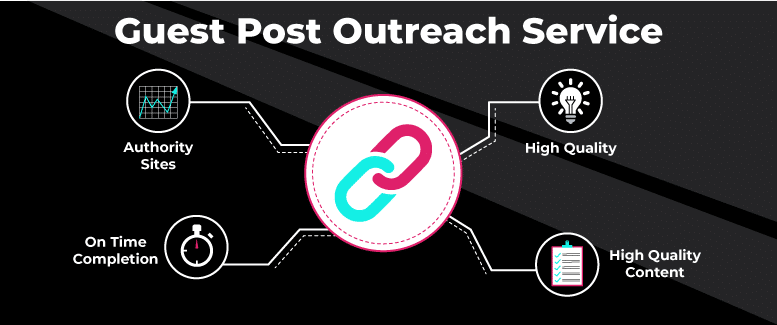
Focus your efforts on high-authority websites that will add value to your backlinks. Don’t just write a million guest posts for every website under the sun. Earning backlinks with guest posts means providing quality content that readers will value on quality referring domains.
2. Resource pages
Some of the best content on the internet comes in the form of resource pages.
Resource pages are informational pieces of content looking to teach the reader something valuable. Resource pages are often guides or tools. They usually take the shape of listicles, reports, case studies, or ebooks and highlight the many uses or features of whatever SaaS products they’re listing or describing.
If some of your resource page ideas start with “10 tips…” or “The 50 Best…” then you’re already headed in the right direction. Resource pages are informational, and if people find that information useful, they’ll share it, making it a valuable strategy to consider.
3. Roundups
You’ve probably been on the internet long enough to have read an article or two with titles like “60 Productivity Experts Recommend Their Favorite SaaS Tools.”
That’s an example of a roundup page, and it’s a great way to get backlinks. It’s also pretty easy to connect with the writers of these pages.
This brings us to media request services.
Media requests
Helpareporter.com (HARO) is a site that connects journalists and reporters with industry experts. All you have to do is sign up for their daily emails and respond to any requests that match your particular expertise.
Here’s a sample of what you’ll see in their daily emails:

For example, if your SaaS business is well-versed in Bitcoin, you might send an email out to query number 25, offering your expertise. If the reporter from Finance Magnates decides you’re a perfect fit to be included in the article, they’ll reach out for a quote.
Your quote will appear in their article, and along with your name and credentials, you’ll hopefully get a backlink to your business.
Of course, you might not always hear back from queries you respond to (there’s a lot of competition out there,) but there are always requests on the site.
HARO isn’t the only name in the roundups game. Here are a few more sites to look at if you want to pursue roundups:
- Qwoted
- SourceBottle
- Terkel
- OnePitch
4. Backlink exchange
Backlink exchange is self-explanatory, it’s basically “you link to me, and I’ll link to you,” but it’s not one of the best SaaS link-building strategies to consider.
Google states in their Link Schemes guidelines that: “excessive link exchanges (‘Link to me and I’ll link to you’) or partner pages exclusively for the sake of cross-linking” can negatively impact a site’s ranking in search results.
So you have to be careful not to overdo it.
If you’re going to use backlink exchanges, do it sparingly and make sure the links you’re using bring value to your content and make sense for your SaaS product.
5. Brand mentions
Backlink mentions are a great way to make use of the website, companies, and services you mention in your content. Put your network to use by employing co-mention, mention-me-back, and unlinked brand mention strategies. Read on for more information.
Co-Mentions
Put your SaaS network to good use and take advantage of co-mentions.
Co-mentions work like this: find a few contacts who write guest posts regularly and then ask them to mention your product in some of their posts and offer to mention their services in your guest posts.
Mention-Me-Back
When writing your guest post or developing your content, you probably mention a fair number of other websites, products, or services. While you might not be directly affiliated with these other companies, reaching out to them for backlinks isn’t a bad idea.
They may not always respond, but it’s worth a shot for some easy, quality backlinks.
Unlinked brand mentions
If your brand pops up on another website without any links or attributions, you can reach out and request a backlink. As the site is already familiar with your product, they’ll most likely honor your request.
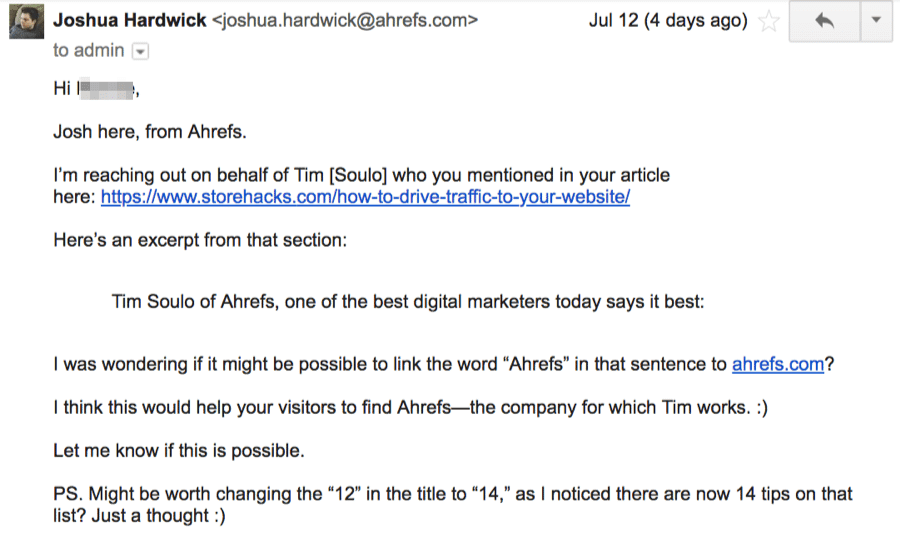
This is a great way to get backlinks with minimal effort.
6. Broken link building
Broken link building is a great way to take advantage of all the outdated and broken (404 error, anyone?) pages lurking on the internet. So have your content ready to go and offer it up to any websites with broken links.
Outdated tools
Keep an eye out for any significant acquisitions by major SaaS companies. If a company has been bought out by a bigger company, there’s a chance some outdated links are waiting to be found. Reach out to sites and offer to replace their obsolete links with your own working links.
This is essentially how a broken link strategy works, but instead of outdated links, you replace broken links.
Missing backlinks
A missing backlink strategy is similar to an outdated and broken link strategy.
If your SaaS brand once had backlinks on a particular site, but now they’re missing, find out what happened. The links could be missing for any number of reasons like maybe the site is refreshing old content. Reach out to the platform and see if you can get your link put back.
7. SaaS reviews and directories
A great place to find SaaS companies and list your own SaaS product are SaaS review sites and directories.
Have you ever searched for something like “best time tracking SaaS?” Odds are your search results directed you to a review site listing the pros and cons of all kinds of time tracking SaaS products.
Here are just a few of the SaaS review sites and directories to look into:
- GetApp
- Capterra
- Top Ten Reviews
- Software Advice
- TrustRadius

8. Stolen images
Does your SaaS company put out unique art or infographics? Check that other sites aren’t repurposing your content for their own use.
If you find some rogue content out there, reach out to the platform using your stolen image and see if they’ll credit you with a backlink. They might gladly comply since they took your image anyway, or they might just remove the picture.
Either way, follow up on any uncredited work to make sure you’re receiving credit for your content.
9. Industry podcasts
Podcasts are pretty big right now, and working them into your SaaS link-building strategy is a great way to increase your brand visibility and get some backlinks.
Research which podcasts cater to your industry and send out a pitch on a topic you’re comfortable talking about for roughly 30 minutes.
When the episode airs, it’s accompanied by a description of the episode’s content, and this is a great place to plug your business and score some backlinks.
10. Brian Dean’s skyscraper technique
Created by Brian Dean, an SEO expert, the skyscraper technique is about writing better content than your competitors, reaching out to the sites backlinking your competitors, and pitching them your better content.
At least that’s the idea. Of course, this technique might not work for all SaaS services, depending on your target market and audience. The key to making this strategy work is producing content that stands head and shoulders above that of competitors.
Convincing a site to backlink to your content means it has to stand out and be something that will crack the top ten of search engine queries and stay there.
11. Common competitors
See one of your direct competitors on a SaaS review site, but not your company?
The common competitor strategy can help you address this gap in your backlink plan.
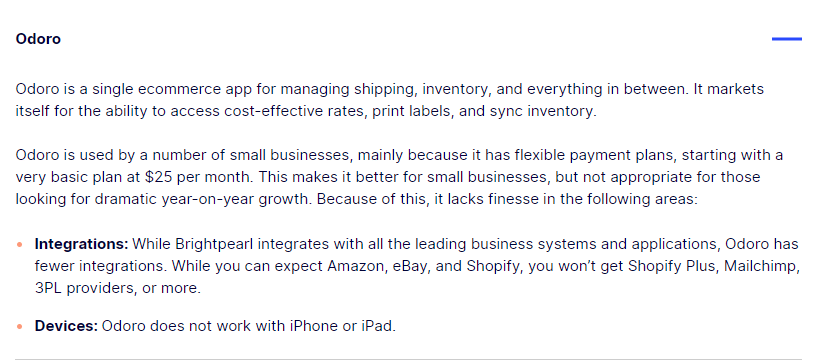
As we mentioned before, SaaS review sites and directories, not to mention other types of content, will publish lists of SaaS products. If you see your competitors on one of these lists, it’s worth reaching out to see if the platform will include your service on the site.
If you find a site linking to a competitor, but you know your product is way better, you can reach out to the site owner and negotiate (championing your higher asset product) that they replace your competitor’s backlinks with your own.
07. How to execute your backlink building strategy
So, now you have 11 strategies in your pocket, but you’re not sure what to do with them.
In the next section, we’ll go over the best ways to execute the subsequent phase of your backlink-building strategy. After reading, you’ll be fully equipped to conduct research, find prospects, send outreach, complete follow-ups, and one step closer to a solid SaaS link-building strategy.
Conduct thorough research
The first step in crafting your link-building strategy is to learn about your industry’s marketplace. Once you’ve keyed in on your marketplace, you can identify your audience.
Knowing your audience is vital because it will help you create winning content that resonates. In addition, when you have a firm idea of who your audience is, you can find out who they’re already following.
This will give you some insight into the kinds of content they’re seeing and who your referral traffic might include. Then you can create similar content or go in a completely different direction.
After you know what marketplace you’re in and who your audience is, you can begin to identify your competitors. Find out what kind of content your competitors are putting out and identify their strongest links.
Find good prospects
If the idea of finding prospects has you in a cold sweat, relax. Finding good prospects isn’t as hard as it seems. The key is to keep your prospecting endeavors efficient and streamline the process.
First, identify websites in your field that you already visit frequently or that you know are popular. Then, connect with industry influencers and build a network of established relationships that will provide you with link-building opportunities.
Stumped for other ways to meet connections? Join online communities or Facebook groups for your industry, attend live industry events, contribute to Twitter chats and LinkedIn groups.

There’s a lot of different ways to find good prospects. Just think outside the box about where you interact with people and platforms in your industry. Keep an excel sheet or running list of your choice of all your contacts with relevant information.
If you’ve never reached out to platforms or connected with a site, you’ll want to send personalized outreach, but we’ll cover that in the next section.
Send personalized outreach
Sending outreach, or pitching your content, is a tricky business. While not very complicated, you don’t want your emails or calls to be too gimmicky or seem inconsistent with your brand and messaging.
You want to keep your outreach personalized, friendly, and to the point, especially if you’re reaching out to someone you’ve never contacted before, in other words, a cold contact. There are CRMs out there that can handle your pitches for you, automating the work and making it easier to contact multiple sources.
Evaluate your business, the number of contacts you have, and decide on the best outreach approach for your strategy. Another critical thing to remember – don’t ask outright for a backlink to your site. This tactic may come across as too aggressive.
Unless you have a connection already with the platform, simply reach out and pitch your content, and if things go well, there’ll probably be a backlink in your future.
Do follow-ups
Completing follow-up outreach will go a long way to securing those backlinks.
A lot of times, one email to a prospect won’t be enough. Think about your own email tendencies—you probably have tons of emails, and you’ve probably misplaced a few of them. It’s okay and even advisable to send a follow-up email to someone you’ve contacted.
Expect to send a few short emails following up with any prospects you’ve reached out to.
08. What to avoid doing when building backlinks
With any process, there’s a right way to do things and a wrong way.
This holds true with building backlinks. While some of the following tactics aren’t necessarily prohibited, they’re frowned upon in the SEO community, and you should do your best to avoid them.
Black-hat tactics
Black-hat tactics involve the manipulation of search results to benefit the company rather than the user. As a result, black-hat tactics will often incur penalization if caught.
Some black-hat tactics include:
- Keyword stuffing – When you “stuff” your content with irrelevant keywords, trying to manipulate where the page ranks. This might include text that sounds like nonsense because it’s made up of repeated words and phrases.
- Cloaking – Search engines are shown different content than users when they visit a site, based on whether their IP address indicates that they’re a human or web crawler. For example, while a search engine spider will see content on a hidden page on a spam site and relay this back to the search results as a legitimate site, the user who clicks on that result will be taken to a spam website.
- Poor quality content – Can include copying content from a website by a person or a bot and then repurposing it for your site. Some black-hat SEO link builders will also use invisible keywords that are the same color as the page background to manipulate search results.
- Paid links – Google prohibits the buying and selling of links or exchanging gifts or favors for links.
- Blog comment spam – While not as popular as it once was, this is the practice of commenting on blogs or other internet content, simply with the name of your website in the comments. Google has updated its algorithm to ignore any links in blog comments.
- Private blog networks (PBN) – This involves using expired domains that are purchased and used as part of a private blog network. New content is added to the expired domains, and low-quality links are put in. These pages are used to refer back to one another to build links constantly. Efforts are made to make the sites look independent rather than part of a network. But the owner of the PBN can place links to their other sites without earning them through third parties.
There are other black-hat tactics, and new ones will probably be created and exploited over time. So basically, if it seems shady, it’s probably not a legit way to build your links.
Rude outreach
This one is unmistakable and involves common sense. When you reach out to sites and platforms to pitch your great content ideas, be polite and refrain from using any alienating language or aggressive tactics.
Especially when you send your follow-up emails, don’t be rude. Be respectful of peoples’ time and remember you’re representing your brand. Even if a prospect is rude to you or doesn’t respond, maintain your cool.
False negotiation promises
Don’t make the mistake of offering up content that you can’t deliver in exchange for backlinks unless you’re sure you can follow up. You want to conduct your business in good faith. Bloggers, websites, and other companies looking to build relationships will ignore your efforts if you promise work you can’t deliver.
Irrelevant pitches
Don’t waste your time or anybody else’s pitching content to sites that don’t make sense for your link-building strategy or for that site in general. Instead, try and secure guest posting content on sites that pertain to your industry.
Similarly, don’t spend valuable time writing content for low-quality blogs or on low-quality content for high authority blogs. You’ll get penalized for spammy practices. Instead, focus your energy on high-quality content aimed at high authority sites and platforms in your industry market.
Conclusion
This article and all the above information should have empowered you to achieve your SaaS SEO link-building goals for your business. Remember that building links is primarily about building relationships and doing the work.
Need some help with that? At Accelerate, content marketing is our specialism. Book a consultation today to see how we can help you reach your goals.
Kind of like mastering Everest or that sourdough recipe…well, hopefully, a little more manageable than Everest.
